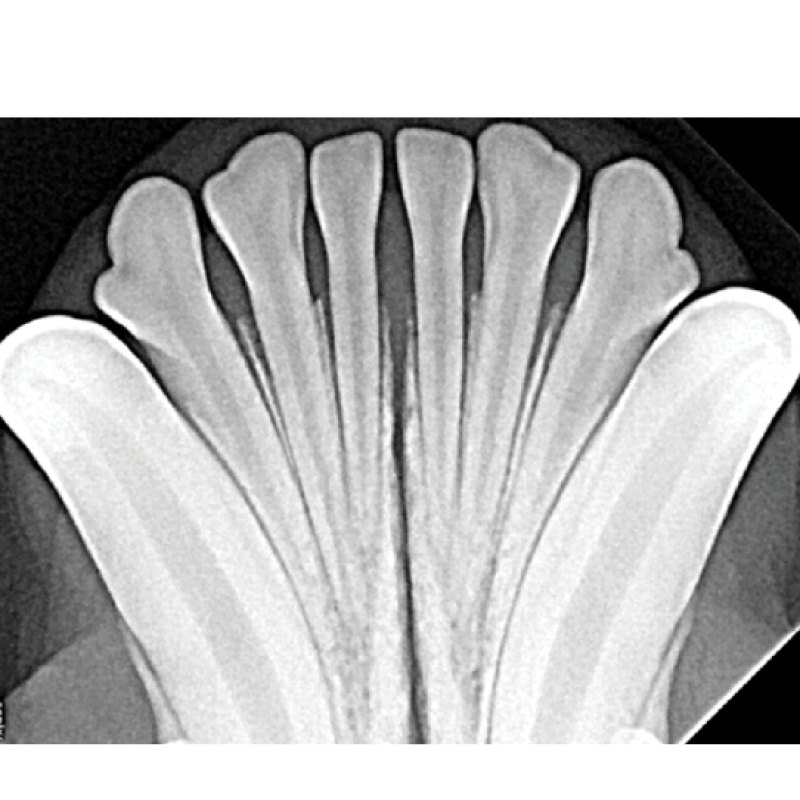Step One. Identify the correct teeth.
The Next image taken is of the mandibular incisors. Highlighted on the dental chart and outlined in the picture below. Note that the teeth appear reversed as the patient is in dorsal recumbancy.
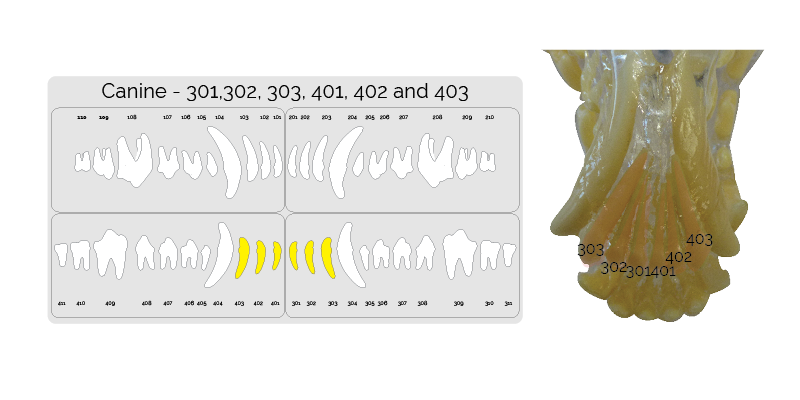
Step Two. Placing the sensor.
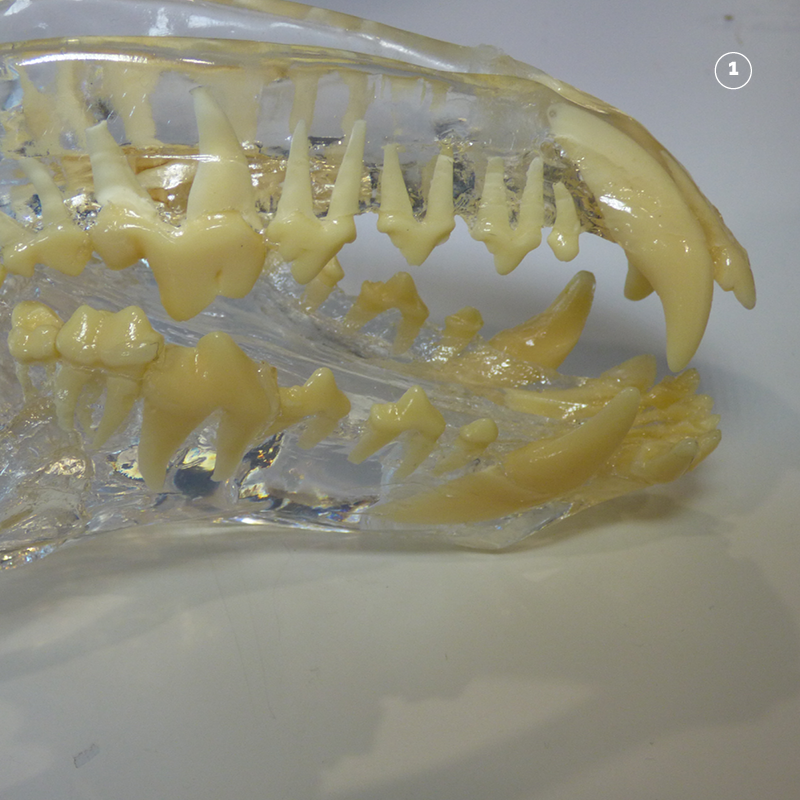
Place the patient into dorsal recumbancy.
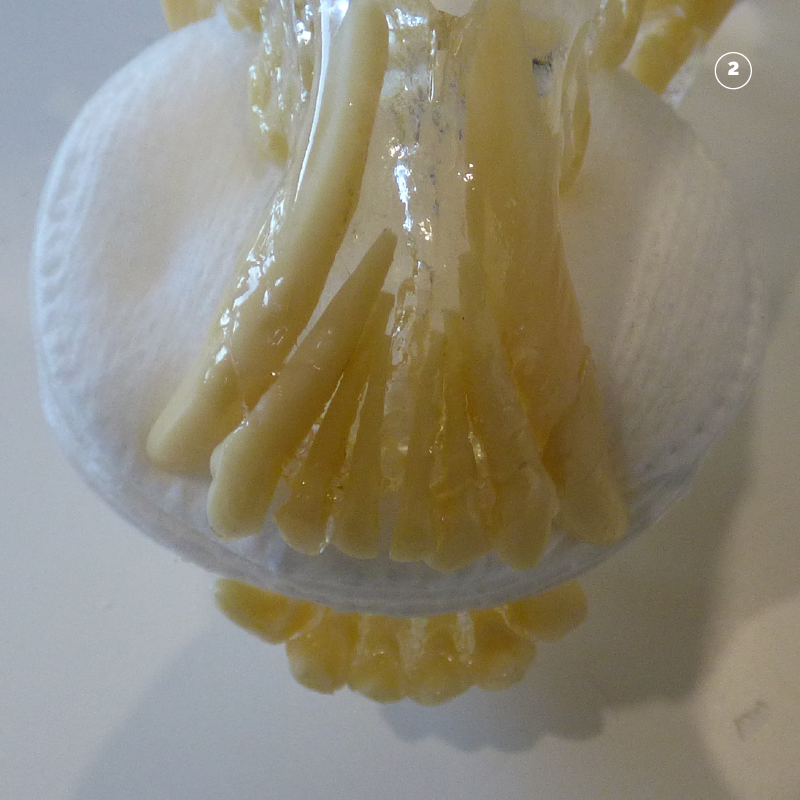
Make a cradle to hold the sensor by placing swabs behind the upper incisor teeth.
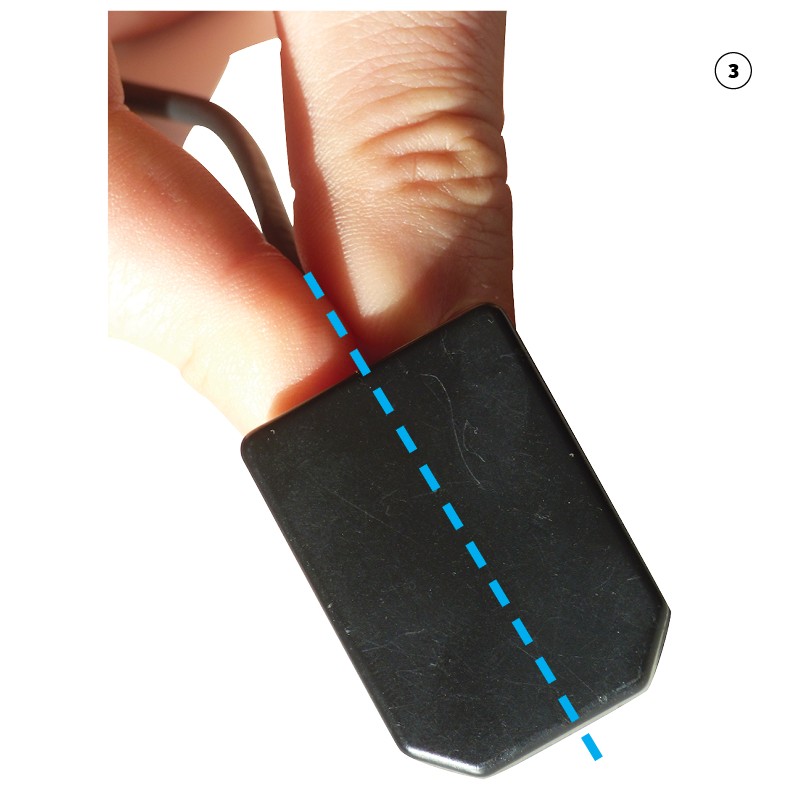
Hold the sensor with the forefinger and thumb and imagine the line between them extends along the sensor. This will help you position it correctly.
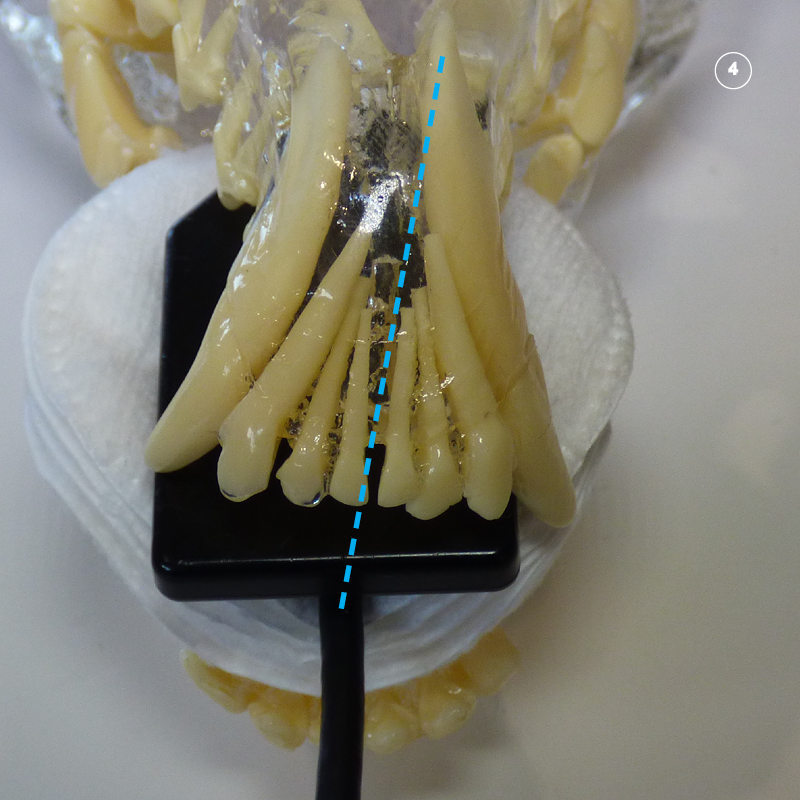
Place the sensor in the mouth with the mid-line between 301 and 401. Ensure that the cusps of the teeth are aligned just inside the sensor so that the roots of the incisors are inside the boundaries of the sensor.
Step Three. Position the tube head opposite the sensor so that the beam covers the sensor.
Place the cone opposite the sensor. Make sure that the entire cone covers the sensor. See through cones make this easy as you can look through the cone to see the sensor and teeth. Sometimes its necessary to retract the lips to see the sensor in the open mouth.
With a see through cone the wire from the sensor can be lined up with the central line of the cone to ensure the beam covers the whole of the sensor.
Marked with red circle.
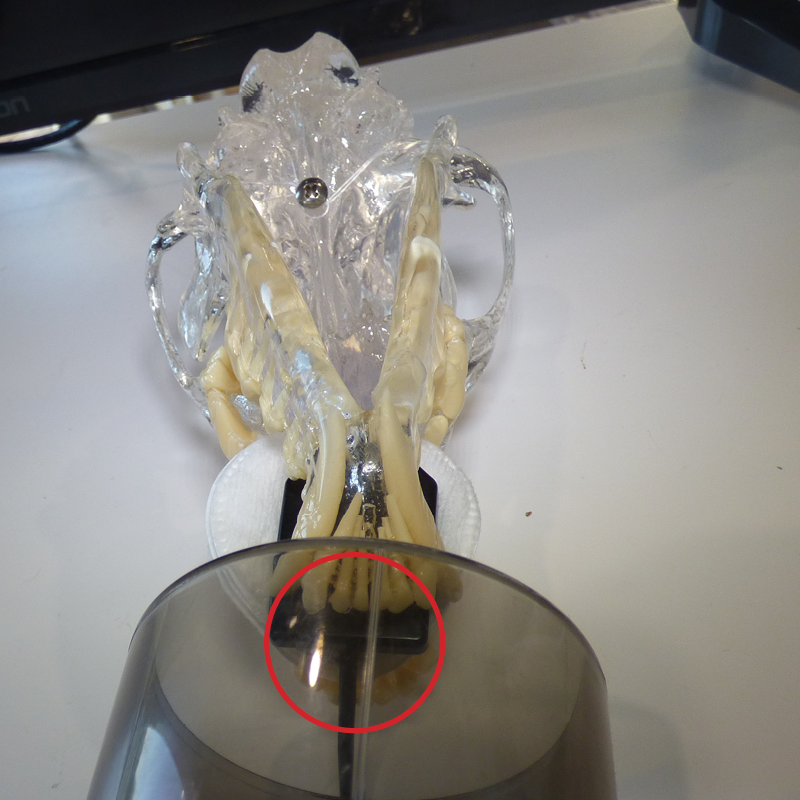
Step Four. Roll the tube head to the correct angle.

Start by visualising the view from the side.
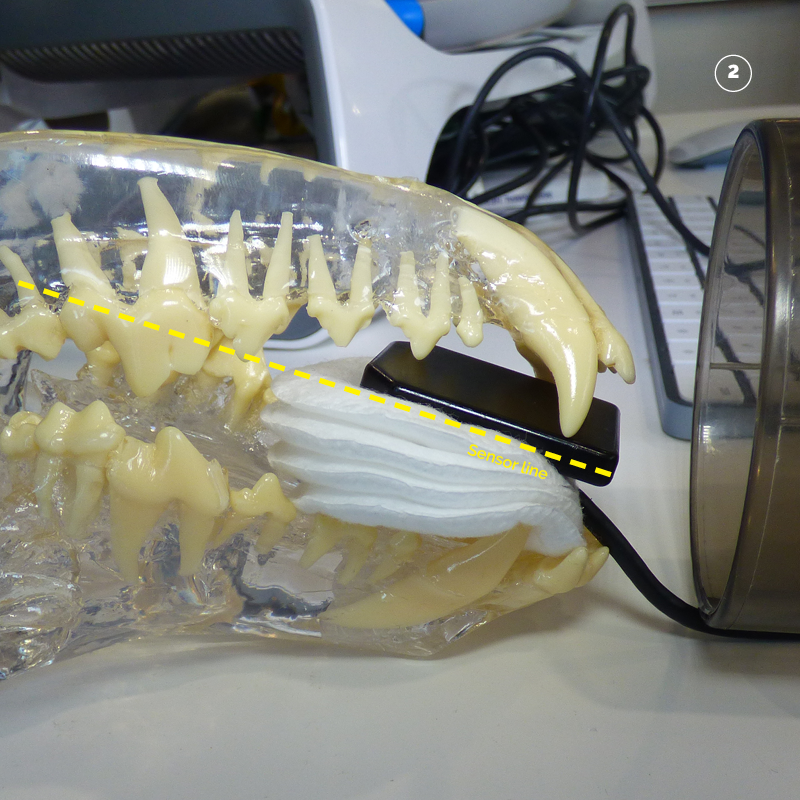
Visualise a line that moves along the sensor from the outside of the mouth inwards. This is the long side of the sensor. Marked in yellow.
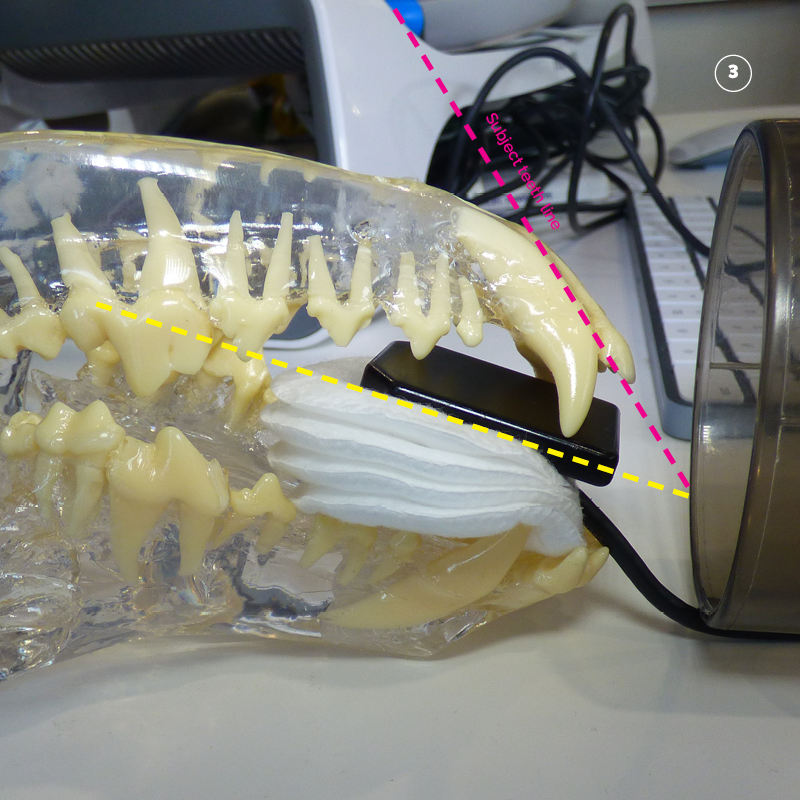
Next visualise a line through the centre of the teeth from cusp of the crown to apex of the root. Marked in Pink.
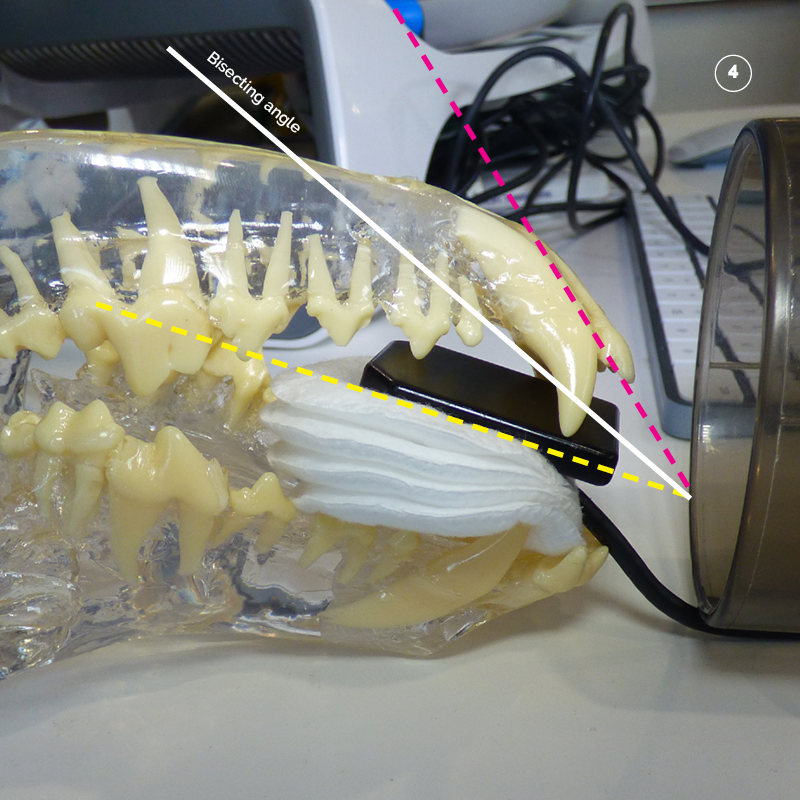
Bisect (half) the angle between the yellow sensor line and the pink tooth line.
Marked in white.
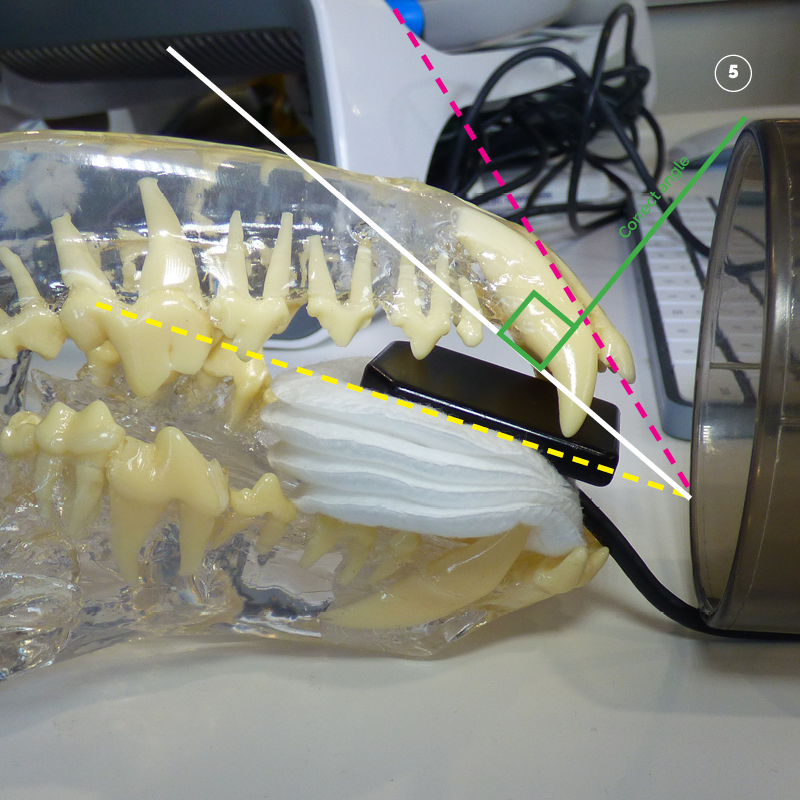
The correct angle is then calculated as perpendicular (90 degrees to) the white line that bisects (half’s) the angle of the sensor line (yellow) and the tooth line (pink). Marked in green.
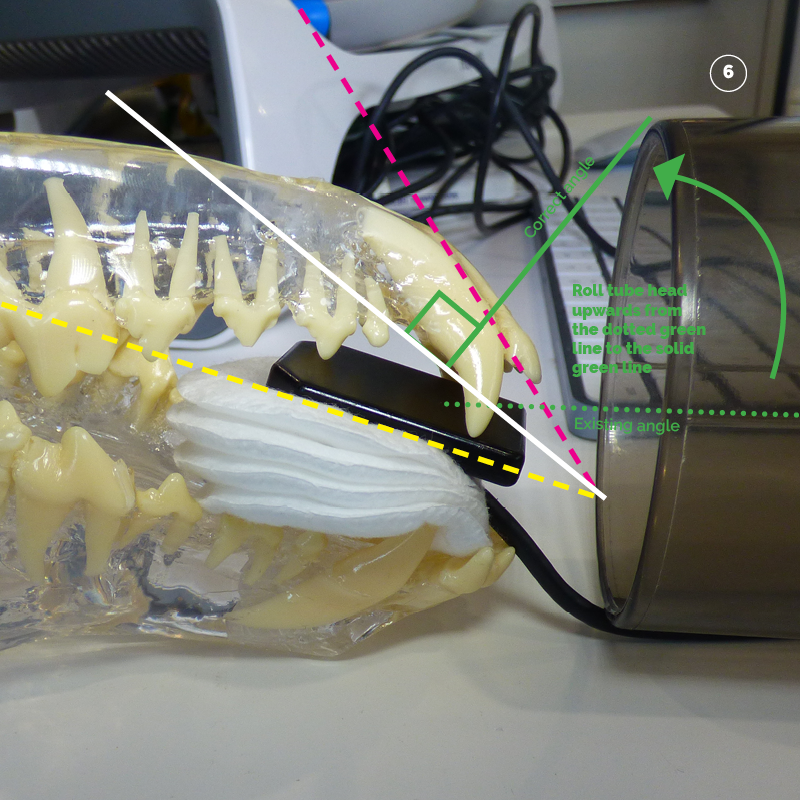
The tube head can then be rolled up to the correct angle.
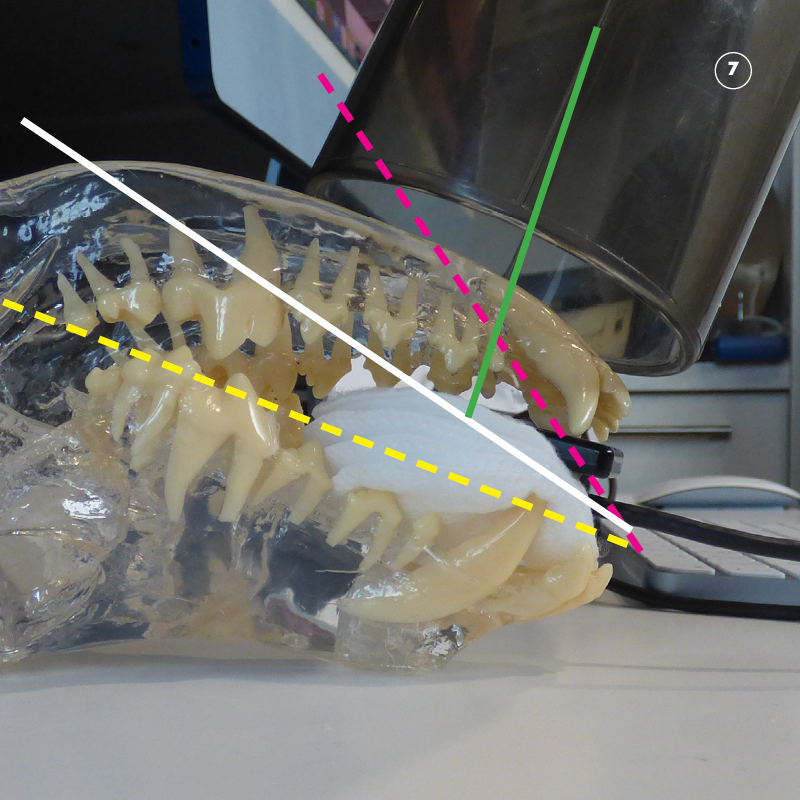
Tube head rolled up to the correct angle.
Step Five. Tube head orientation to patient mid-line.
The standard orientation for lower incisor teeth is along the mid-line.
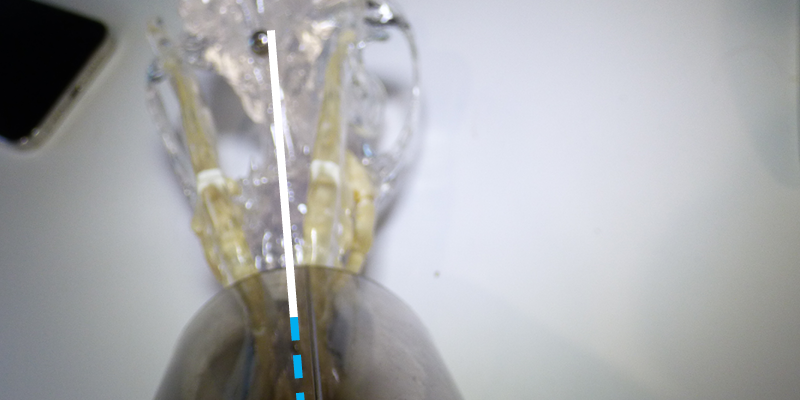
Step Six. Radiation factors
The standard factors with a digital sensor are as follows:
| Patient Size | Location | KV | MAS |
| <= 15 Kg | Mandibular Incisors | 60 | 0.080 |
| > 15 Kg | Mandibular Incisors | 60 | 0.100 |
